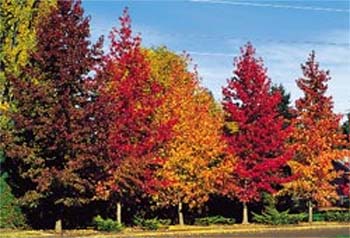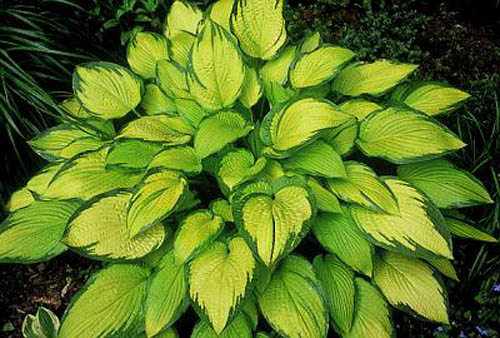Last September we discussed “New Garden Site Preparation” and how we always start in late summer to prepare next season’s new bed sites. Good soil is the basis on which all successful gardens are built so, we like to look at our soil every fall. This is a slower time of year for us and we can take the time to work with the soil, make amendments as required, and get it ready for next season. Top quality soil is dark in color, active in microorganisms, plant nutrients, organic matter, and a pH close to 6.5.
The first step is to have your soil tested. Soil test kits are available from most nurseries and mail order catalogs. Private companies also do soil testing, they provide detailed reports and recommendations but, may be expensive. Actually, your local Extension Agent is probably your best source for home garden soil testing. Whatever source you use, make sure they include testing minor or trace elements. You need to know the strength and weaknesses of the soil you are starting with.
There are sixteen nutrients that are essential for the growth and reproduction of plants, thirteen of these essential elements are found in inorganic and organic fertilizers and are often divided into three groups. The primary nutrients include the elements nitrogen, phosphorus, and potassium. The secondary nutrients include sulfur, calcium, and magnesium. The third group of essential elements is called micronutrients as they are required by the plant in small amounts. These nutrients include iron, manganese, boron, zinc, copper, molybdenum, and chlorine. Once you have your soils test results back, you can correct any deficiencies through the application and through blending of soil amendments.
Any addition to the soil that improves its physical or chemical condition, is considered a soil amendment. Many types of amendments are available to the gardener to change pH and nutrient levels. The correct soil pH is essential for optimum plant growth. Dolomitic limestone adds calcium and magnesium as it increases pH, making the soil more alkaline. Wood ashes raises soil pH, but you must apply twice as much ash as limestone for the same effect. Sulfur is used to acidify garden soil.
The amount of amendment to add depends on the current and desired pH. Peat moss can also be used to effect the pH of the soil although, harder to use as their effect varies by type and where mined:
- Sphagnum moss peat 3.0 to 4.0
- Hypnum moss peat 5.0 to 7.0
- Reed-sedge peat 4.0 to 7.5
- Decomposed peat 5.0 to 7.5
Peat Moss Frequently Asked Questions by the Canadian Peat Moss Association at http://peatmoss.com/pm-efaq.html is a good source for further information.
Other amendments are added specifically to improve soil nutrient levels. Green sand and granite meal are sources of potassium. Granite meal is finely ground granite rock that releases its potassium slowly. Green sand is relatively low in potassium, which is readily dissolved. Additional nutritional amendments that can be purchased for garden use include cottonseed meal, kelp meal, leather meal, and worm castings, as well as an array of synthetic fertilizers. Other agricultural byproducts such as peanut shells, tobacco stems, rice hulls, corn cobs and other fibrous agricultural byproducts are sometimes available for soil additives or mulching.
Some amendments will improve the soils’ quality and texture. The composition of soil consists of four parts: mineral matter, organic matter, water, and air. The relative amounts of mineral and organic matter determine the physical properties of soil. Soil texture is influenced by the amounts of three groups of soil particles. The three soil separates are sand, silt, and clay. Texture is how the soil feels. Soil texture describes the mixture of sand, silt and clay particles for a given soil. A coarse soil has a large amount of sand, silt soil has the texture of flour, and loam soil has nearly equal amounts of sand, silt, and clay. Sand particles can be seen by the naked eye. A microscope must be used to see silt particles. An electron microscope is needed to see clay particles. By changing the percentages of sand, silt, and clay we can alter the texture and thus, the moisture retention abilities of the soil.
The regular addition of manures, compost, cover crops, and other organic matter can raise the soil nutrient and structure level. Soil structure refers to the arrangement of sand, silt, and clay particles. Organic matter is often referred to as the glue that holds everything together. When using animal manures, it is recommended to let it compost for at least six months before using. Even if you are going to compost manure with yard waste, it still needs to sit. Desirable soil quality does not come about with a single or even several additions of organic material but, requires a serious, long term program.
The use of compost is a way to improve soil structure. Correct composting can result in a valuable nutrient and humus source for any garden. The basis of the process is the microbial decomposition of mixed, raw, organic materials into humus. For more information on composting go to the Compost Resource Page athttp://www.oldgrowth.Org/compost/ This site is intended to serve as a hub of information for anyone interested in composting.
As you can see, there are many options available to you once you have had your soil tested. Whatever amendments you end up using, it is important to work them in deeply, at least six to eight inches. You need to blend them well as not only do they breakdown better but, a plant’s root system will develop better in a well-mixed medium. We prefer the fall because the amendment has a better opportunity to decompose and be available in the Spring for the plants’ use.



